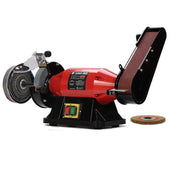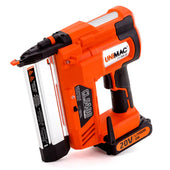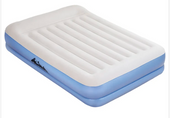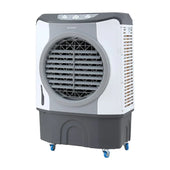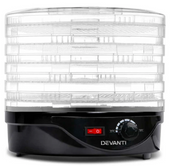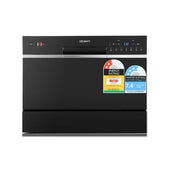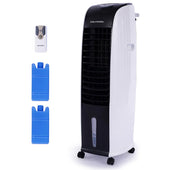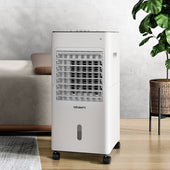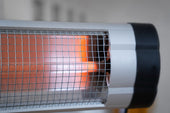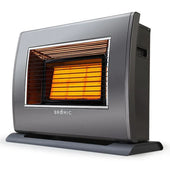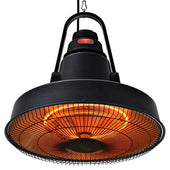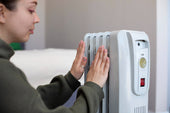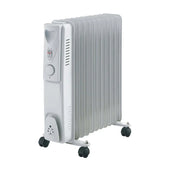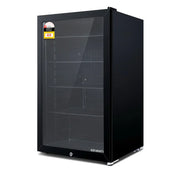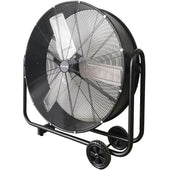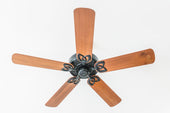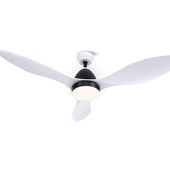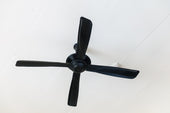It's 2:17 AM on a Thursday night, and you're three hours deep into what was supposed to be a "quick session" before bed. Your lower back is screaming, your shoulders have migrated up to your ears, and you're doing the awkward shuffle-dance in your chair, trying to find a position that doesn't make you wince. Sound familiar?
We've all been there—hunched over our keyboards like digital gargoyles, completely absorbed in our games while our bodies stage a quiet rebellion beneath us. That creaky old office chair you grabbed from Facebook Marketplace two years ago? It's not just uncomfortable anymore—it's actively sabotaging your gaming and your health.
Table of Contents
- The Unsung Hero of Your Setup
- Why Your Chair Might Be Ruining More Than Your Game
- What Makes an Ergonomic Gaming Chair Worth It
- Chairs That Actually Deliver: Top Picks for Every Type of Gamer
- Massage Chairs in Gaming: Brilliant Innovation or Expensive Gimmick?
- Stories from the Trenches
- Doctor's Corner: The Stuff They Don't Tell You
- Why Trust Matters When You're Dropping Serious Cash
- Gaming Chair vs Office Chair: Which Is Right for You?
- Care & Maintenance: Keeping Your Chair in Top Shape
- Research & Evidence: What Science Says About Gaming Chairs
- FAQ Corner
- Wrapping It Up: Your Back Deserves Better
The Unsung Hero of Your Setup

Your gaming chair is your co-pilot through life. It's there when you're smashing through that boss fight that's been kicking your arse for weeks, cradling you during lazy Sunday afternoon sessions when you're pottering around in your favourite open-world game, supporting you through late-night Discord calls with mates, work-from-home Zoom meetings (camera off, obviously), and those marathon weekend streams where time becomes a meaningless concept.
Yet, we'll spend three weeks researching the perfect mechanical keyboard—reading reviews, watching YouTube videos, debating Cherry MX Blues versus Browns—but we'll plonk ourselves down on whatever chair happens to be nearby and call it good enough.
Here's the thing though: you probably spend more quality time with your chair than you do with some of your closest friends. Between gaming, working, and general computer faff, many of us are logging 8–12 hours a day in that seat. Your mattress gets eight hours max, but your chair? That's pulling proper overtime.
Why Your Chair Might Be Ruining More Than Your Game

Everyday Aches Gamers Know Too Well
You know that moment when you finally stand up after a long session and your body makes those creaky old-house noises? Or when you try to straighten your back and it feels like someone's been using your spine as a coat hanger? These aren't just quirky gamer badges of honour—they're warning shots.
There's the classic "desk neck"—that forward-jutting posture that makes you look like a confused turtle. The shoulder knots that feel like someone's tied your muscles in sailor's knots. The lower back that transitions from a dull ache to a proper burning sensation somewhere around hour four.
And let's talk about that weird thing where your bum goes completely numb, but you're so engrossed that you don't move until you literally can't feel your legs anymore. Then you stand up and do that embarrassing zombie shuffle while feeling returns with a thousand tiny pins and needles.
What the Experts Actually Say
Dr Sarah Chen, a physiotherapist who works with esports teams in Sydney, puts it bluntly:
"I see 20-year-olds with the spinal health of 50-year-olds who've worked construction their whole lives. The gaming community is facing a proper health crisis."
She explains that when you're gaming, you're not just sitting—you're sitting in the most biomechanically challenging way possible. You're leaning forward, your arms are reaching, your neck is craned toward the screen, and you're holding tension in your entire body during intense moments.
"It's like holding a yoga pose for six hours straight, except it's the worst possible yoga pose."
The financial reality is sobering too. Poor ergonomics don't just make you uncomfortable—they can legitimately impact your gaming performance. When you're constantly shifting around trying to get comfortable, your aim suffers. When your neck is killing you, your reaction times slow down. When your back is seizing up, you can't focus on the game properly.
What Makes an Ergonomic Gaming Chair Actually Worth It

Lumbar Support That Actually Works
Real talk: most gaming chairs have lumbar support that's about as useful as a chocolate teapot. You know the type—that sad little pillow that slides around and ends up wedged somewhere near your shoulder blades by the end of your session.
Proper lumbar support isn't a cushion you can lose down the back of your chair. It's built into the chair's structure, positioned exactly where your lower back curves inward. When it's done right, it feels like the chair is giving your spine a gentle, constant hug in all the right places.
Adjustability That Makes Sense
The best gaming chairs don't just go up and down—they adapt to you like a well-trained butler:
| What Should Adjust | Why It Matters |
|---|---|
| Armrests (4D movement) | Up, down, in, out, forward, back, even pivot to match WASD or controller grip |
| Seat tilt | Sometimes you want to lean back during cutscenes without knees pointing at ceiling |
| Seat depth | Too deep = circulation cut-off; too shallow = sliding off the edge |
| Backrest angle | Independent from seat for perfect support in any position |
Materials That Don't Hate You
Ever peeled yourself off a leather chair after a particularly sweaty gaming session? That squelching sound as you stand up? Yeah, nobody needs that in their life.
The best gaming chairs use materials that actually breathe:
- Mesh backs that let air flow through
- Fabric that wicks moisture instead of trapping it
- Even good leather chairs have perforations or cooling channels
Memory foam sounds fancy, but it can be a trap—it moulds to your bad posture and keeps you there. High-density foam that's firm but forgiving works better for long sessions.
Build Quality You Can Trust
Nothing kills immersion quite like your chair randomly dropping six inches mid-game because the gas cylinder has given up the ghost.
Quality indicators to look for:
- Class 4 gas cylinders rated for years of heavy use
- Steel frames, not plastic that'll crack under pressure
- Casters that roll smoothly without getting clogged with hair and dust bunnies
- Stitching that looks like someone actually cared
Chairs That Actually Deliver: Top Picks for Every Type of Gamer
The Marathon Grinder — Steelcase Gesture Gaming Edition
For: People who measure gaming sessions in geological time periods
This is the chair for those who start playing after dinner and suddenly it's dawn. The Gesture Gaming Edition feels like sitting in a luxury car seat engineered by NASA.
What makes it special:
- Armrests so adjustable they border on ridiculous—they'll follow your arms wherever they need to go
- Back support that moves with you as you lean and shift
- One reviewer described it as "like having a really attentive friend gently supporting your back all day"
The reality check: At around $1,400, it's not cheap. But break it down by hours of use over its expected lifespan, and it's actually quite reasonable. Plus, Steelcase backs it with a 12-year warranty.
The Budget Champion — Corsair TC100 Relaxed
For: Uni students, first-job graduates, or anyone living on two-minute noodles to fund their GPU upgrade
At under $300, this chair punches well above its weight class.
Why it works:
- ✅ Fabric that breathes beautifully—no more peeling yourself off hot leather
- ✅ Integrated lumbar support that actually stays where it should
- ✅ Build quality that feels solid after 8 months of daily 6-hour sessions
- ✅ It's the gaming chair equivalent of a reliable Toyota—not flashy, but gets the job done
The Statement Piece — Noblechairs Legend TX
For: When you want people to go "bloody hell, that's a nice chair"
Wrapped in genuine Texas leather with hand-stitched details, it looks like something from a Bentley interior.
But here's the thing—it's not just a pretty face.
The cold-cure foam maintains its shape even after years of use, and the leather actually ages beautifully, developing a lovely patina instead of cracking like cheaper alternatives.
At around $600, you're paying for genuine materials and craftsmanship without venturing into Herman Miller territory.
The Big and Tall Champion — Vertagear PL6800
For: Taller gamers or those who like room to spread out
The PL6800 is properly spacious without feeling like you're sitting in a dining room chair.
Bonus features:
- RGB lighting that's actually tasteful—subtle glow that can reduce eye strain
- Frame rated for weights up to 180kg
- Commercial-grade gas cylinder and larger, more robust casters
- "Built like a tank but moves like a sports car"
The Indulgent Experiment — GTRacing Ace M1 Massage Chair
For: The "why not?" crowd
The Ace M1 combines a decent gaming chair with legitimate massage functionality, and the results are surprisingly compelling.
What's different:
- Multiple motors targeting different back areas (not just a vibrating cushion)
- Quiet enough that it won't interfere with voice chat
- Functions perfectly well with massage turned off
- One tester: "Like having a massage therapist built into your gaming setup"
At around $450, it's reasonable considering you're getting both furniture and a massage device.
Massage Chairs in Gaming: Brilliant Innovation or Expensive Gimmick?

The jury's still out, but early adopters report genuinely positive experiences. The key seems to be viewing massage as a bonus feature rather than the main selling point.
| Pros | Cons |
|---|---|
| Helps prevent muscle tension during long sessions | More expensive and complex |
| Several streamers report better posture maintenance | Requires power connections |
| Genuinely relaxing during breaks | Not everyone finds it pleasant |
| Can improve circulation | More potential failure points |
The verdict? If you already enjoy massage and have the budget, they can be worthwhile. For most gamers, a well-designed traditional chair provides better value and reliability.
Stories from the Trenches
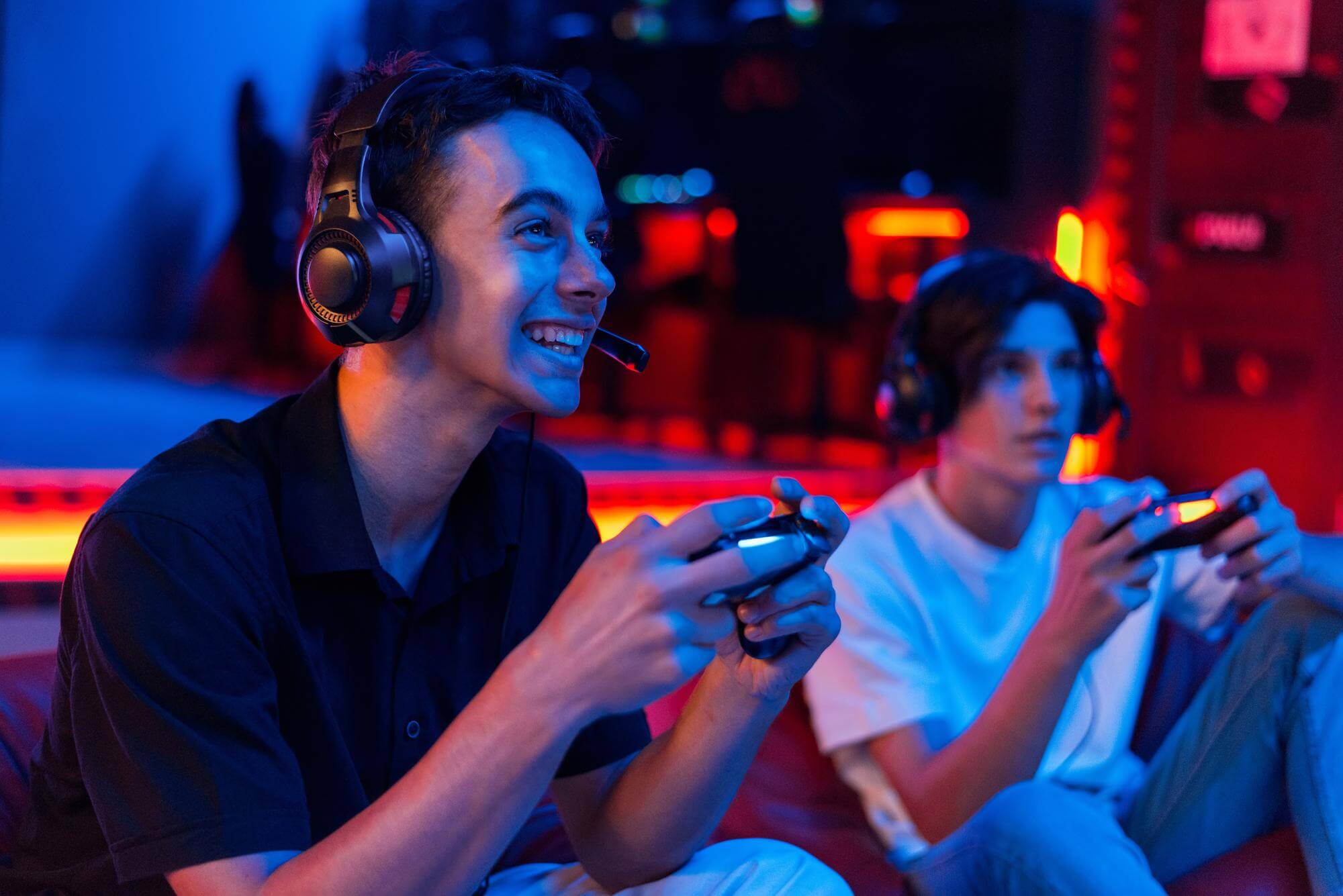
Marcus, 24, Perth Streamer
"By the end of each stream, I was in agony. My viewers started commenting that I looked uncomfortable on camera, which was embarrassing because it was affecting my content quality."
The fix: Proper ergonomic chair
The result: "Within a week, I could stream longer without discomfort. My gameplay actually improved because I wasn't constantly distracted by aches and pains."
Emma, Brisbane Valorant Competitor
"I was getting horrible headaches during practice sessions. I thought it was eye strain, but my old chair was forcing me to crane my neck forward."
The fix: Chair with proper height adjustment and headrest
The result: "It sounds dramatic, but it literally changed my life. I could practice longer, my aim improved, and the headaches disappeared completely."
James, Melbourne Casual Gamer
"I figured any chair would do since I'm not a pro gamer, just someone who plays a few hours most evenings."
The reality check: After developing chronic lower back pain, his GP recommended proper seating.
The lesson: "Turns out 'casual' gaming still adds up to 20+ hours a week. My back didn't care that I wasn't playing professionally."
Doctor's Corner: The Stuff They Don't Tell You

The 30-20-8 Rule That Actually Works
Dr. Lisa Park, who works with esports teams in Melbourne, swears by this:
Every 30 minutes: 20 minutes sitting with good posture + 8 minutes standing/moving + 2 minutes light stretching
"I know it sounds disruptive, but most patients find their performance actually improves. You come back refreshed rather than increasingly stiff and tired."
Make it natural:
- Stand between matches
- Stretch during loading screens
- Walk around during queue times
Screen Position Matters More Than You Think
"I see gamers with perfect chairs who still develop neck problems because their monitor is positioned incorrectly."
The rules:
- Screen at eye level when sitting with proper posture
- "Arm's length plus six inches" for distance
- You should see the entire screen without moving your head
The Hydration Connection
Here's something most people don't know: dehydration directly affects your spinal discs.
"Your discs are about 80% water. When dehydrated, they lose cushioning ability, contributing to back pain during long sitting sessions."
The balance:
- Sip regularly rather than chugging large amounts
- Keep a large water bottle at your desk
- Remove barriers—don't make yourself walk to the kitchen every time
Why Trust Matters When You're Dropping Serious Cash
Tested Durability vs Marketing Fluff
The gaming chair market is flooded with brands making bold claims. Some are legitimate manufacturers with rigorous testing; others are dropshippers slapping logos on generic chairs.
| Established Brands | Budget Brands |
|---|---|
| Test for 40+ hours/week over multiple years | Often skip testing to keep costs down |
| Test weight limits, durability, fabric wear | May not publish testing standards |
| Higher upfront cost, better long-term value | Lower cost, higher gamble |
Look for: Brands that publish testing standards or offer generous warranties—indicators of confidence in their products.
Warranties That Mean Something
A warranty is only as good as the company behind it. A five-year warranty from a company that might not exist in two years isn't worth much.
What to check:
- Different coverage periods for different components
- Warranty process (do you pay return shipping?)
- Some companies send technicians to your home vs requiring you to ship back
Certifications That Matter
Meaningful certifications:
- BIFMA: Independent testing for safety and durability
- Greenguard: Low chemical emissions (important for sensitive users)
- Ergonomic certifications: From occupational health organisations
While not everything, they indicate manufacturers take quality seriously enough to invest in third-party validation.
Gaming Chair vs Office Chair: Which Is Right for You?

The lines have blurred significantly in recent years. Historically, gaming chairs focused on bold, racing-style designs with aggressive ergonomic features, while office chairs leaned toward neutral, professional aesthetics and subtle ergonomics.
But now, many gaming chairs incorporate serious ergonomics, and office chairs offer gaming-oriented versions. The best chairs in both categories offer similar features: proper lumbar support, adjustable armrests, quality construction, and appropriate sizing.
Choose based on:
- Ergonomic features and build quality
- How well the chair fits your body
- Not just whether it's marketed as 'gaming' or 'office'
Gaming chairs: High backs, bold colours, deep recline, neck/lumbar support, ideal for gaming setups.
Office chairs: Neutral colours, breathable mesh options, professional look, best for office/conference use.
If you game and stream extensively and want a chair that matches your rig's style, a gaming chair is preferable.
If you mainly work with occasional gaming and want a minimalistic look, a high-end office chair might suit better.
The best chair will support your health and performance—regardless of branding.
Care & Maintenance: Keeping Your Chair in Top Shape

A good gaming chair is a multi-year investment. Treat it right:
- Regularly clean fabrics or leather with manufacturer-recommended cleaners
- Vacuum or dust mesh backs for optimal airflow
- Tighten screws and bolts every few months
- Lubricate casters if they squeak or stick
- Avoid direct sunlight to prevent fading
- Use chair covers around pets to prevent claw damage
Proper care extends the life of your chair, keeps you comfortable, and protects your investment.
Research & Evidence: What Science Says About Gaming Chairs

The Clinical Evidence
Recent peer-reviewed research has provided fascinating insights into gaming chair effectiveness. A groundbreaking 2024 study published in the Journal of Electronic Gaming and Esports compared gaming chairs directly with high-end office chairs during actual gaming sessions.
The research involved 33 competitive League of Legends players who completed 2-hour gaming sessions in both a Secretlab TITAN Evo gaming chair and a Herman Miller Aeron office chair. Using sophisticated muscle stiffness measurements via oscillation frequency, researchers tracked real physiological changes throughout extended play.
Key findings were remarkable:
- Gaming chair users showed 25% more wins and 15% more kills compared to office chair sessions
- Reduced muscle stiffness in the lumbar and thoracic regions with the gaming chair
- 58% of participants preferred the gaming chair overall
- Significant improvements in relaxation, spaciousness, and aesthetic appeal
The study's lead author noted: "Players demonstrated measurably better game outcomes when using the gaming chair, suggesting that psychological comfort alongside biomechanical advantages combined to create an environment where players could perform at their peak."
The Biomechanics Behind Comfort
Professor Stuart McGill, a distinguished spine biomechanics researcher with over 30 years of experience, explains the science behind effective seating in his comprehensive research on stress and sitting.
His key insights reveal why variable posture is essential:
"The ideal sitting posture is one that continually changes. Tissue loads must be migrated from tissue to tissue to minimize the risk of any single tissue accumulating microtrauma."
McGill's research demonstrates that:
- Sitting creates higher loads on spinal discs compared to standing
- Prolonged static postures cause tissue deformation and eventual discomfort
- Proper lumbar support helps counteract hydraulic disc pressure that causes pain
- Adjustable chairs that facilitate posture changes are superior to fixed designs
The Movement Solution
Leading ergonomics research from Herman Miller emphasizes that the best seating solutions promote healthy movement rather than enforcing rigid postures. Their extensive research shows that:
- Dynamic sitting reduces pressure points and improves circulation
- Natural postural variation prevents muscle fatigue and stiffness
- Responsive chair mechanisms that move with the user provide superior support
- Ergonomic design should accommodate individual differences in body size and sitting preferences
Clinical Implications for Gamers
The research consistently points to several critical factors for gaming chair selection:
Evidence-based recommendations:
- Adjustable lumbar support is essential, not optional
- 4D armrest adjustability significantly reduces shoulder and neck strain
- Quality materials and construction directly impact long-term comfort and durability
- Aesthetic appeal genuinely influences comfort perception and performance
Professor McGill specifically endorses gaming chairs like the Secretlab TITAN Evo as "a firm chair with adjustable lumbar support, adjustable armrests, and adjustable neck support, to aid in avoiding spine, pelvis, buttock, and leg stress concentrations."
The Performance Connection
What makes this research particularly compelling for gamers is the direct link between seating comfort and gaming performance. The 2024 JEGE study provides hard evidence that chair choice isn't just about comfort—it's about competitive advantage.
The performance benefits observed include:
- Improved focus and concentration during extended sessions
- Reduced physical distractions from discomfort and pain
- Enhanced reaction times due to better postural alignment
- Increased endurance for longer gaming sessions
This scientific foundation validates what many professional esports players have discovered: investing in proper seating isn't luxury—it's performance optimization.
FAQ Corner
Are gaming chairs actually better for your posture?
A well-designed gaming chair can be excellent for posture, especially if it has proper lumbar support and adjustability. Recent research shows gaming chairs can reduce muscle stiffness in key areas compared to standard office chairs. The key is choosing based on ergonomic features rather than aesthetics alone. Look for chairs with adjustable lumbar support, proper seat depth, and armrest customization to maintain healthy spinal alignment during extended gaming sessions. Quality gaming chairs with these features can provide superior postural support compared to basic office alternatives, but prioritise ergonomic design over flashy gaming aesthetics for the best posture benefits.
Gaming chair vs office chair—what's the real difference?
The lines between gaming and office chairs have significantly blurred as manufacturers focus on ergonomic performance over traditional categorizations. Clinical studies now demonstrate that the best gaming chairs can outperform high-end office chairs in both comfort metrics and gaming performance indicators. Modern gaming chairs often feature racing-inspired designs with enhanced side bolstering and more aggressive adjustability options, while office chairs traditionally emphasize neutral aesthetics and conservative ergonomic approaches. However, both categories now prioritize similar core features: lumbar support, adjustable armrests, seat height customization, and quality materials. Choose based on specific ergonomic features, build quality, and warranty coverage rather than marketing categories or brand positioning.
Do I really need a massage gaming chair?
Massage functionality in gaming chairs represents a luxury feature rather than an essential ergonomic requirement for most users. While massage chairs can provide relaxation benefits and temporary relief from muscle tension, they typically add complexity, cost, and potential maintenance issues without addressing fundamental seating ergonomics. For most gamers, investing in a well-designed ergonomic chair with proper lumbar support, adjustability, and quality construction offers superior long-term value and reliability compared to massage-equipped alternatives. Focus on core ergonomic features like seat depth, backrest angle adjustment, and armrest positioning first, then consider massage functionality only if your budget allows for premium features after securing proper ergonomic fundamentals.
What should I look for in a warranty?
Comprehensive warranty coverage serves as both protection for your investment and an indicator of manufacturer confidence in product quality and durability. Look for warranties that specifically cover structural components including the frame, gas cylinder, and base mechanism, as these are critical for safety and functionality. Quality manufacturers typically offer 5+ years coverage on frames and gas cylinders, with shorter terms for wear items like upholstery and armrest pads. Examine warranty terms for coverage exclusions, claim procedures, and whether replacement parts are readily available. Reputable companies with established service networks and responsive customer support provide additional confidence in warranty fulfillment and long-term product support throughout the chair's expected lifespan.
How often should I replace my gaming chair?
A quality gaming chair should provide reliable service for 5-8 years with proper care and maintenance, though replacement timing depends on usage patterns, build quality, and individual comfort requirements. Monitor key indicators for replacement need including significant foam compression that cannot be restored, frequent gas cylinder failures that affect height stability, or persistent discomfort that chair adjustments cannot resolve. Regular maintenance including cleaning, hardware tightening, and proper usage can extend chair lifespan significantly. Consider replacement when repair costs approach 50% of new chair value, when safety concerns develop with structural components, or when ergonomic needs change due to health considerations or workspace modifications that current chair features cannot accommodate effectively.
Wrapping It Up: Your Back Deserves Better

After months of testing chairs, interviewing experts, and diving deep into the latest research, one thing is crystal clear: your choice of gaming chair matters more than you might think. It's not just about comfort during your next gaming session—it's about maintaining your health and performance for years to come.
The scientific evidence is compelling. Clinical research shows that gamers using proper ergonomic chairs don't just feel better—they actually perform better. We're talking about measurable improvements in wins, kills, and overall gaming outcomes. That's not marketing fluff—that's peer-reviewed science.
The gaming furniture industry has matured dramatically. You no longer have to choose between a chair that looks good and one that supports your body properly. The best modern gaming chairs successfully marry ergonomic excellence with the aesthetic appeal that makes you excited to sit down and game.
Remember:
- There's no single "perfect" chair for everyone
- Your ideal chair depends on your height, weight, gaming habits, budget, and personal preferences
- The most expensive chair isn't necessarily the best for your needs
- Scientific evidence should guide your decision, not just marketing claims
Take the time to consider what you actually need. If you're already dealing with pain or discomfort, prioritise ergonomic features over flashy aesthetics. The research is clear: proper lumbar support, adjustable armrests, and quality construction make a measurable difference in both comfort and performance.
If you're building your first serious setup, consider your chair as important as your monitor or keyboard—because frankly, it is. Your body is your most important gaming peripheral, and the science proves that supporting it properly translates directly to better gaming outcomes.
Your body carries you through every victory, every crushing defeat, every "just one more game" that turns into an all-nighter. It's time to return the favour with a chair that properly has your back—literally.
Ready to upgrade your command centre?
Browse the thoughtfully curated collection of ergonomic gaming chairs at Duringdays, where every chair has been selected for real-world performance, genuine comfort, and the kind of build quality that lasts years, not months.
Your future self will thank you—probably around 3 AM when you're still comfortable, instead of doing that awkward chair shuffle trying to find a position that doesn't hurt.

